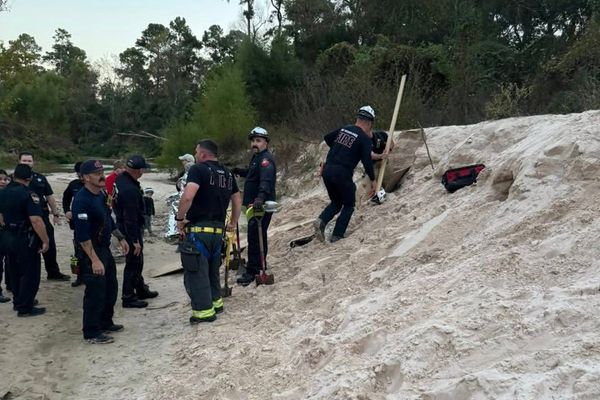
Anniversaries are a ritual in India. This week, it has been interesting to watch how the 50th anniversary of the Emergency declared by Indira Gandhi at midnight on June 25, 1975, is being observed.
There are several people in the governing party, the Bharatiya Janata Party who opposed the emergency. And in the opposition is the Congress Party, held responsible for the Emergency. As a result, the occasion has been reduced to one of the BJP finding more ways to slam the Congress by pitching the ‘Samvidhan Hatya Diwas’ to counter the opposition’s campaign to uphold the Constitution. This is politics as usual.
But how does all this rhetoric help us to understand what the Emergency was all about, what we should learn from it, and whether what’s happening in India today reflects a difference or a similarity to the events that unfolded 50 years ago?
I ask this as someone who was a journalist at that time, working with Himmat Weekly, a news magazine founded by Rajmohan Gandhi. Hence, I found this statement of Union Home Minister Amit Shah, while speaking about that period in our history, particularly ironic: “Just imagine the moment you became subjects of a tyrant within a day. You were a journalist or a student but suddenly became a danger to the country.”
Perhaps the selective amnesia that afflicts most politicians made him forget people like Umar Khalid, a student leader who questioned the Modi government’s intent in bringing in the Citizenship Amendment Act. Khalid was arrested in 2020 and continues to languish in jail without trial, without bail, for more than six years. He must have wondered how he suddenly became a danger to the country. A country where the government had not declared an internal Emergency.
Or Siddique Kappan, the Delhi correspondent of a Malayalam news portal who was arrested while on his way to report the rape of a Dalit woman in Hathras in October 2020. He was incarcerated for over two years, is out of bail, but still has the cases hanging over his head.
Or the Kashmiri journalists who have been in and out of jail. Why does this government consider them a danger to the country? Read this report in Kashmir Times on these journalists, their battle for bail and the multiple cases they have had to fight. How can this happen if the people who fought the emergency opposed precisely this kind of arbitrary action at that time?
These are the questions we should be asking on the anniversary of the Emergency. Though there is little evidence of them being asked except editorially in Indian Express which has run an extensive series on the Emergency.
Even there, it is political scientist Suhas Palshikar who raises several pertinent questions in his edit page article on June 25. He emphasises that the anniversary should be a time of introspection and asks whether the “Emergency template” has really been discarded. For instance, like the “foreign hand” that Indira Gandhi saw lurking everywhere, today there is the American billionaire George Soros, and if you protest you are labelled anti-national or an urban Naxal. Palshikar concludes: “The essence of the Emergency is being normalised in India’s current moment.”
To understand this better, just look at the state of the Indian media. During the Emergency, censorship was imposed. Everyone was required to check if what was published adhered to “guidelines” issued by the government that kept changing as the Emergency progressed. If the authorities thought you had violated them, your publisher could be fined or jailed, your printing press could be sealed, and you would find it difficult to continue.
As has been recorded in several books and articles over the years, mainstream print media, and there was only print in those days, conformed and fell in line. Indian Express did resist, as recounted in this piece by Coomi Kapoor who was working with it as a reporter at that time. In her first-person account, Kapoor writes about the way the government used all avenues of pressure, including the income tax department, trying to seize the printing press, and denying advertisements from the government and public sector companies to bring the paper in line.
If all this sounds familiar, it is the template this government has followed in the last decade to get the media to conform and relay the official narrative without asking too many questions.
During the Emergency, the Indian Express could withstand such pressure for some time because of its feisty owner Ramnath Goenka and because it had the financial ability to withstand it.
What is not acknowledged adequately is the role played by many smaller publications, in English and in the regional languages, that also tried to resist censorship. They did not have the deep pockets of mainstream media houses like the Express group. And as a result, many of them had to fold up.
Himmat Weekly, for instance, where I worked, also ran blank editorials after the Emergency was declared. It also tried to bypass censorship by deciding that we did not have to submit a copy to the censor as the government had declared “guidelines”. We thought we were too small and inconsequential to attract the wrath of the government. But in doing so, we were clearly delusional as in an authoritarian regime, even small pinpricks of opposition or questioning will not be tolerated.
Himmat survived the Emergency, just about. It was deprived of advertising; it had fines and notices slapped on it for “violations” of censorship guidelines that seem ridiculous today (such as using a quotation from Mahatma Gandhi about freedom), and had to hunt for a printer who would risk printing the magazine.
I have recounted the Himmat story over the years several times as illustrative of what happened to many other small publications (read here, here and here). And to point out that the story of resistance to authoritarianism is not just about prominent politicians and big media, but also of small independent publications and ordinary people. This is a history that sometimes goes unrecorded and unacknowledged.
For instance, few know about A D Gorwala, a retired civil servant who brought out a small journal named Opinion. When Emergency was declared, he refused to submit to censorship and continued till he was ordered to shut down. In his last issue, he wrote:
“The current Indira regime, founded on June 26, 1975, was born through lies, nurtured through lies, and flourished by lies. The essential ingredient of its being is the lie. Consequently, to have a truth-loving, straight thinking journal to examine it week after week and point out its falsehoods becomes intolerable to it.”
Others like Minoo Masani’s Freedom First, or Janata Weekly, whose editor G G Parikh is now 100 years old and still as feisty as ever, also resisted. And there were many others across India.
The reason we need to heed such struggles is to understand what we are witnessing today.
Take the media. Mainstream media has mostly fallen in line. The resisters are the small independent YouTube channels run by journalists who once worked in mainstream, or digital news platforms that perform the kind of “journalism of courage” that we so sorely need today.
As Palshikar points out, aspects of the Emergency have been normalised. It has happened gradually in a way that most Indians seem to have been anesthetised. We have accepted that governments have a right to suppress dissent, to jail opponents, to put pressure on the media to conform, and to use all the power it has in its hands to ensure that its actions are not challenged.
And yet, 50 years after the Emergency, we are lamenting that Indira Gandhi did precisely this.
Complaining about the media is easy. Why not do something to make it better? Support independent media and subscribe to Newslaundry today.
Newslaundry is a reader-supported, ad-free, independent news outlet based out of New Delhi. Support their journalism, here.







